My understanding is that inductors in a dc circuit act like a wire and don't do anything.
So what are the ones labeled FLxx in this schematic for? Could they be replaced with a simple wire and have no affect on the circuit function?
My understanding is that inductors in a dc circuit act like a wire and don't do anything.
So what are the ones labeled FLxx in this schematic for? Could they be replaced with a simple wire and have no affect on the circuit function?
First, from the way they are specified, those parts are more likely ferrite beads than inductors. For more information about ferrite beads, see this old question:
However, the function of the ferrite bead and the inductor is somewhat similar.
In this circuit, they are most likely (it would be more clear if you included the whole circuit and not just a piece) filtering the power supply nets.
They are there to ensure that the current flowing through those wires is mainly DC. The chips that are powered by these nets will have variable current requirement over time. In some circuits, the current requirement can change very quickly. These inductors ensure that when that happens, the extra current (or sudden drop in current) is supplied by the bypass capacitors (for example C42 and C46) rather than by the up-stream power supply.
This reduces time varying currents in the supply lines coming from wherever they are coming from, which is likely to reduce radiation (EMI) produced by this device.
If the supply is noisy (and the noise is in the correct frequency band), these ferrites could also help prevent that noise affecting the down-stream components.
If you replace these inductors (or ferrite beads) with simple wires, the most likely impact would be increased radiated emissions from your system, or possibly interference between different subcircuits in your system (which we can't predict without seeing more of your circuit).
They are there to filter noise or spikes from those signal lines. The designer thought that function was necessary and some of them have resistance so replacing them with a piece if wire is probably unwise.